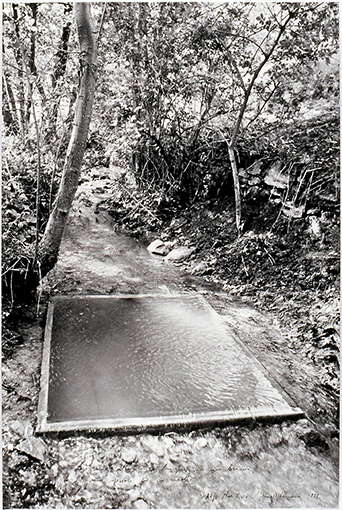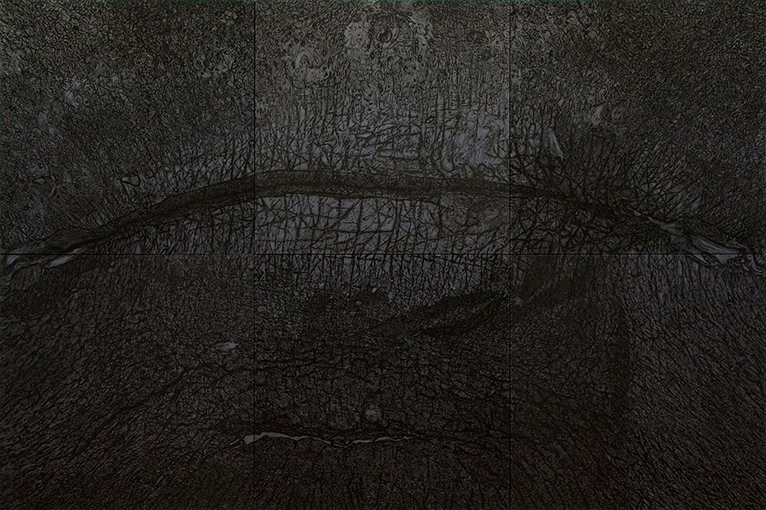
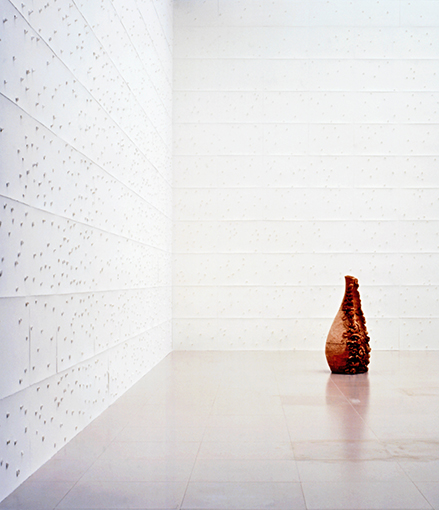
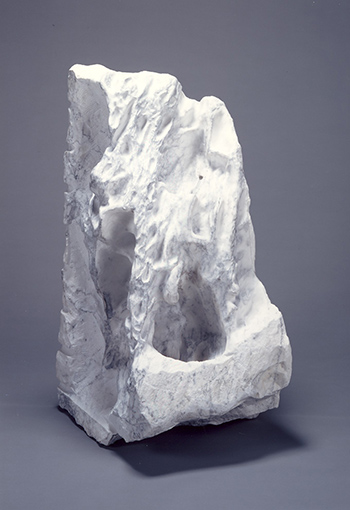
[Audio Guide]
A sizable hunk of white marble exerts a powerful presence. Marble is a material traditionally favored for sculpture, and since ancient times, it has been used to produce countless masterworks including idealized human figures and realistic portraits. However, this marble sculpture does not seem to represent any specific form, and on the contrary it seems to remain in its natural state, revealing weathering and erosion. However, from a different perspective, one might say that it has been sculpted by nature. Marble is formed from coral reefs and other substances affected by various forces accompanying the movement of the earth’s crust. In the process of its formation, some parts of the marble are susceptible to the effects of nature, while other parts are hard and unyielding. Rather than bending the marble to his will in the pursuit of lofty art, Penone faces the material in its natural state and “dissects” it, as the title suggests. The stream of water flowing over the sculpture’s surface seems to be a vestige of some ancient memory.



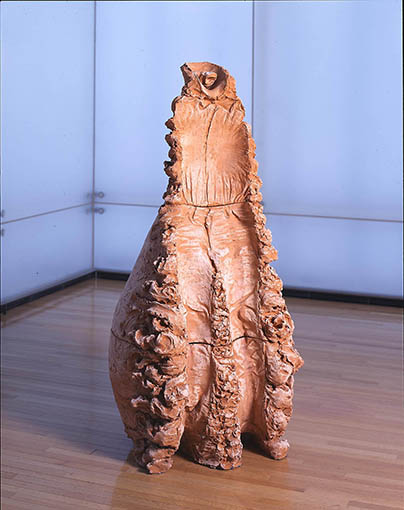
[Audio Guide]
This sculpture is in a shape much like that of a vase. The “breath” in the title leads us to recall the image of craftsmen blowing into glass in order to make it expand. We get the sense that the work exhaled the breath that transformed itself. As the artist imposed the shape of his own body that decorate the surface from top to bottom, we can see that the apex is modeled on a face. The protuberance in the head part thus becomes a negative of the mouth cavity that contains the exhaled breath. The power of life resides in every thing in the natural world. That this energy changes our perspective is the starting point of Penone’s creative activity. Accordingly, the theme of this work is breathing as the root of human activity. Breath is itself formless, but can give form to other things, and in this way Penone is truly breathing existence into his






